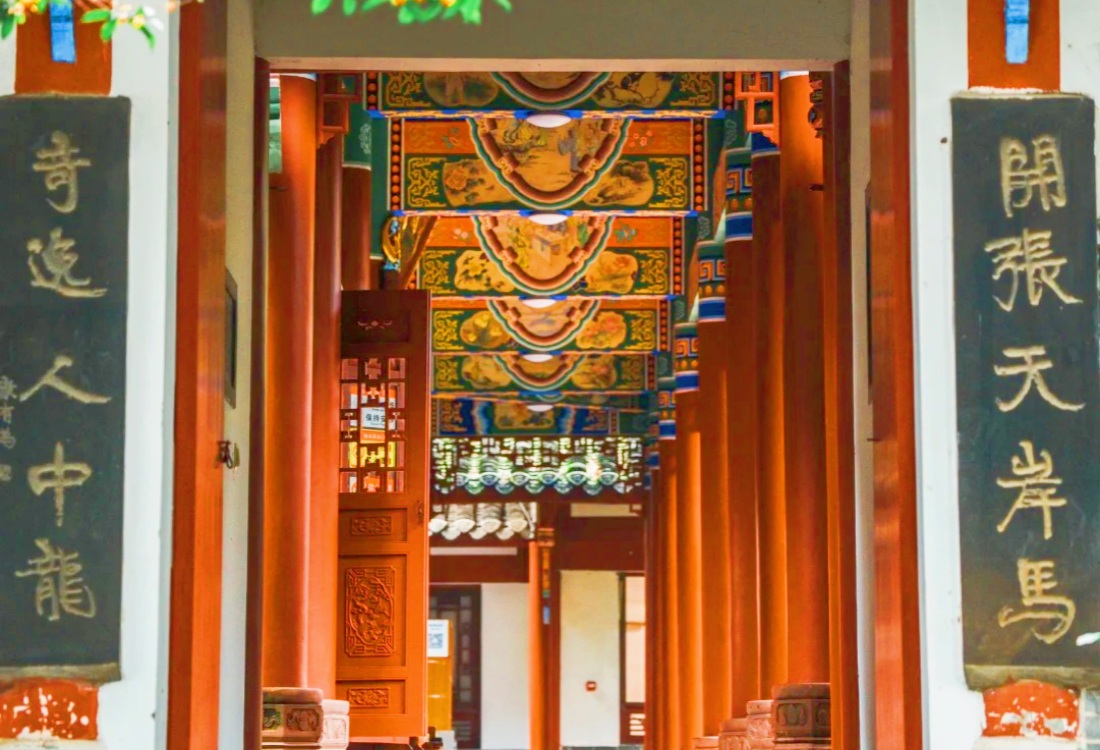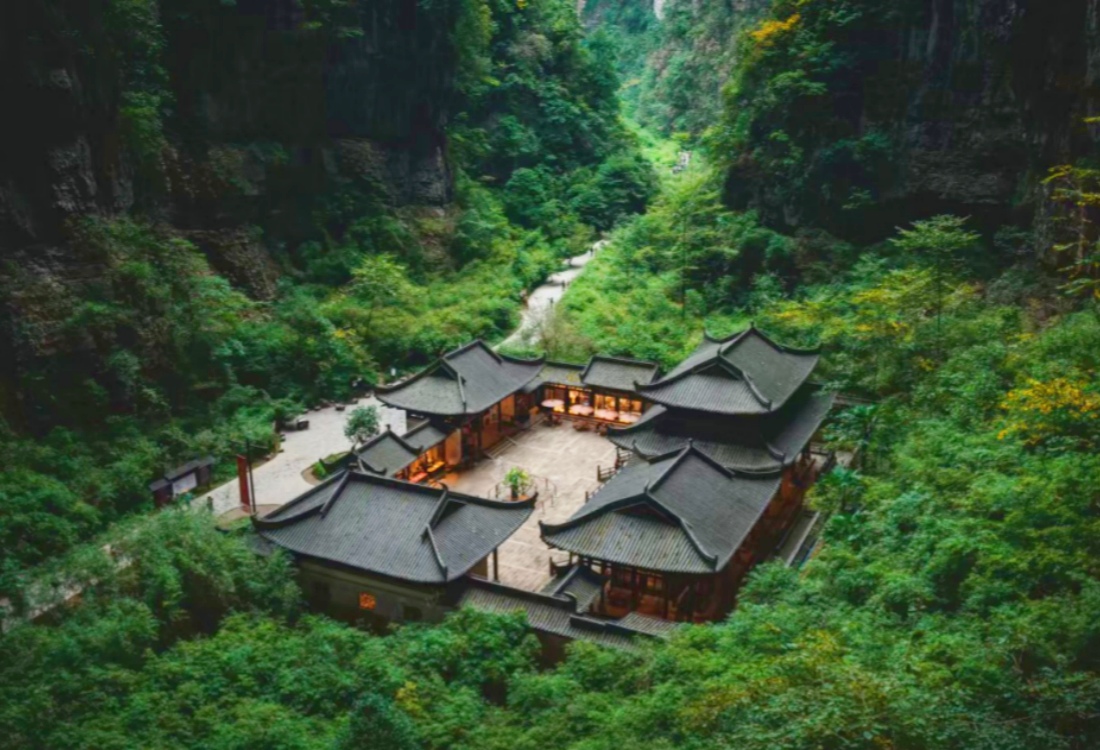Table of Contents
ToggleHere’s a detailed guide on ancient sites to visit in Chengdu.
Wuhou Shrine: Honoring the Legendary Zhuge Liang
Wuhou Shrine is one of Chengdu’s most iconic ancient sites, dedicated to Zhuge Liang, the brilliant strategist of the Three Kingdoms era. Located in the southern part of the city, the shrine is surrounded by peaceful gardens and traditional architecture. Inside, visitors can explore statues, calligraphy, and historical displays that honor Liu Bei and Zhuge Liang. It’s a must-visit for history lovers and fans of Chinese historical romance
How to Get to Wuhou Shrine in Chengdu
Wuhou Shrine is conveniently located near central Chengdu. Take Metro Line 3 to Gaoshengqiao Station, then walk or take a short taxi ride. Alternatively, it’s easily accessible by bus or private car.
Best Time to Visit Wuhou Shrine
For the best experience, visit in spring (March–May) or autumn (September–November) when the weather in Chengdu is mild and pleasant. Weekday mornings are ideal to avoid crowds and enjoy the shrine’s tranquil ambiance.
Visitor Tips for Exploring Wuhou Shrine
Allocate 1–2 hours for your visit to explore both the shrine and Liu Bei’s tomb.
Hire a local guide or use an audio guide to fully appreciate the historical significance.
Bring a camera—Wuhou Shrine offers great photo ops, especially in the quiet courtyards and bamboo groves.
Jinli Ancient Street: Chengdu’s Cultural Time Capsule
Right next to Wuhou Shrine lies Jinli Ancient Street, a lively lane that brings old Chengdu to life. Originally dating back to the Qin Dynasty, it’s now a pedestrian street featuring classic Sichuan-style architecture. Enjoy local snacks, traditional crafts, opera performances, and folk art demonstrations while soaking in the nostalgic vibe. Perfect for an afternoon stroll with a cultural twist.
Taste Authentic Chengdu Street Food
Food lovers will find Jinli a paradise of Sichuan flavors. Must-try treats include spicy skewers, sweet glutinous rice cakes, Sichuan-style noodles, and Chengdu-style dumplings. The variety of snacks is ideal for a self-guided food tour—perfect for sampling local flavors while exploring.
Tips for Visiting Jinli Ancient Street
Best time to visit: Late afternoon into the evening, when lanterns light up the street and the atmosphere becomes truly magical.
How to get there: Easily accessible by Chengdu Metro (Line 3 to Gaoshengqiao Station, then a short walk).
Travel tip: It can get crowded, especially on weekends. Visit early or during weekdays for a more relaxed experience.
Discover the Dujiangyan Irrigation System: A UNESCO World Heritage Site
Located just 60 km from Chengdu in Sichuan Province, the Dujiangyan Irrigation System is one of the most remarkable ancient water-management projects in the world. Built over 2,000 years ago during the Qin Dynasty, this ingenious engineering marvel still functions today, supplying water, preventing floods, and supporting agriculture throughout the Chengdu Plain. Its historical and scientific value earned it a UNESCO World Heritage status in 2000.
How to get to Dujiangyan
Traveling to Dujiangyan from Chengdu is easy and convenient:
By high-speed train: 30–40 minutes from Chengdu Railway Station to Dujiangyan Railway Station.
By bus or private car: 1–1.5 hours.
Once there, electric shuttle buses and walking paths make it easy to explore the site.
Best Time to Visit Dujiangyan
For the best experience, visit Dujiangyan between March and May or September to November. The weather during these months is mild and comfortable, perfect for walking through the lush, mountainous surroundings without the summer heat or winter chill.
Qingyang Palace: Taoist Heritage in the Heart of Chengdu
Qingyang Palace (Green Goat Palace) is the largest and oldest Taoist temple in Chengdu, dating back over 1,600 years. The architecture combines elegance and spiritual significance, with beautiful carvings, bronze goat statues, and a peaceful courtyard perfect for reflection. Taoism enthusiasts and cultural travelers will appreciate its tranquil atmosphere and deep spiritual roots.
Getting to Qingyang Palace
Qingyang Palace is easily accessible from central Chengdu:
By Metro: Take Line 2 to Tonghuimen Station, Exit B. Walk 10 minutes to the temple.
By Bus: Several city buses stop nearby, including routes 5, 13, and 34.
By Taxi: A quick and affordable option from most central hotels in Chengdu.
Tips for Visiting Qingyang Palace
Opening Hours: Typically 8:00 AM – 5:30 PM. Go early to enjoy the peaceful atmosphere.
Admission Fee: Around ¥10-20 RMB.
Best Time to Visit: Spring and autumn are ideal for comfortable weather and clearer skies.
Etiquette: Be respectful inside the temple—no loud talking or flash photography.
Discover the Leshan Giant Buddha: A Marvel of Ancient Engineering
The Leshan Giant Buddha is the world’s largest stone Buddha statue, standing at an impressive 71 meters tall. Carved into the cliffs at the confluence of the Minjiang, Dadu, and Qingyi rivers in Sichuan Province, this majestic figure was constructed during the Tang Dynasty (713–803 AD) to calm the turbulent waters. Today, it’s a UNESCO World Heritage Site and a must-visit destination in southwest China.
How to get there
The Leshan Giant Buddha is about 130 km (80 miles) from Chengdu and easily accessible by high-speed train, which takes around 1 hour. From Leshan Railway Station, you can take a local bus or taxi directly to the scenic area. Alternatively, join a day tour from Chengdu for a stress-free experience with guides and transfers included.
Visitors can explore the Buddha from multiple angles—hike down the cliffside path for a close-up view of the feet or take a river cruise for a panoramic shot of the entire statue. The entrance fee is around ¥80 RMB. Expect some walking and stairs, and be prepared for crowds during peak times.
Best time to visit
Spring (March–May) and autumn (September–November) offer the most pleasant weather and fewer crowds. Summer brings lush greenery but also heat and more tourists. For photography, early morning or late afternoon light enhances the dramatic features of the statue and surrounding landscape.









